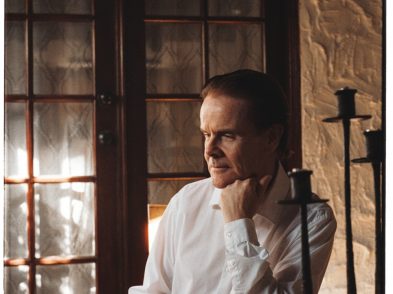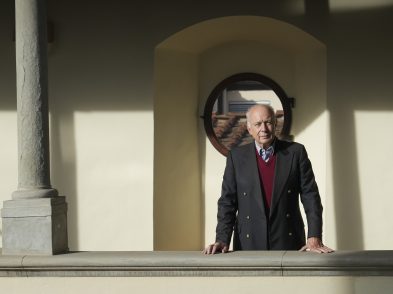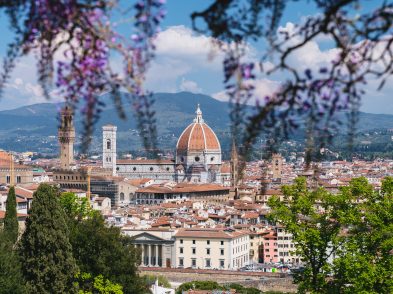If you mention the word “Carnevale” in Italy, most people’s first thought is of Venice, with an elegant crowd dressed in beautiful 18th-century costumes strolling through piazza San Marco. But it is on the other side of the Italian peninsula, in Viareggio, adjacent to Tuscany’s Tyrrhenian Sea, that we find the oldest continuously operating Carnevale celebrations in all of Italy.
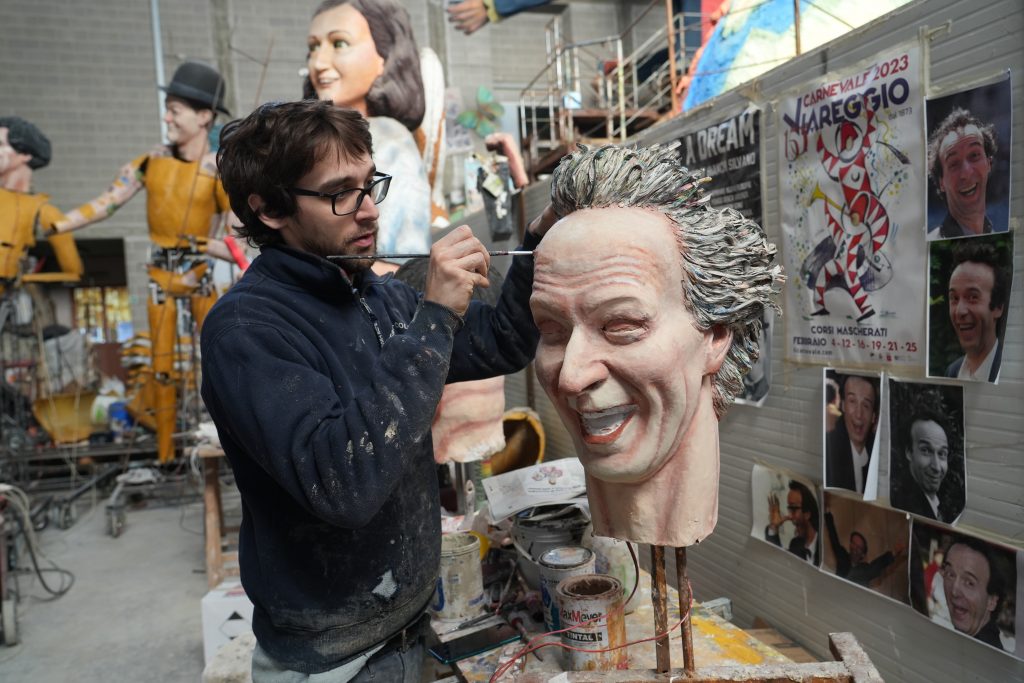
Historically, Carnevale is the final hurrah before the restrictions of Lent begin on Ash Wednesday (on February 22 this year). The origins of Viareggio Carnevale date back to 1873, but it was in the 1920s that the celebrations, as we know them today, truly came into being. In 1921, a special magazine Viareggio in Maschera (which is still published today) was launched, along with an anthem composed by Icilio Sadun set to lyrics by Lelio Maffei. Giacomo Puccini, who lived in Viareggio, was asked to compose the tune, but he was too busy with Turandot, so he suggested Sadun as a suitable alternative, and the song stuck. In 1923, the first float with a moving statue was created, thanks to a simple internal mechanical device designed by Umberto Giampieri. In 1925, Guglielmo Lippi Francesconi and Antonio d’Arliano perfected the papier-mâché technique for the floats, a cast paper-and-paste method that allowed the creation of larger, lighter sculptural figures for the floats. The final touch arrived in 1931, when Futurist artist Uberto Bonetti designed Burlamacco, the beloved mascot of Viareggio Carnevale, along with his female counterpart, Ondina, respectively representing winter and summer (Ondina in a swimsuit).

This is how a small Tuscan town, frequented by countless elite and international tourists during the summertime, transformed into a massive worksite in the winter. In the quieter months, the resident shipbuilders and crews would bring their ingenuity and skills together conceptualizing, designing and bringing to life a magical world. The result? Huge papier-mâché floats that are dizzyingly impressive (up to 20 meters or more in height) in a creative mix of social commentary, political satire and Disney-like fantasy.
The tradition only halted for a few years during and after WWII. In 1954, with the establishment of public broadcaster RAI, the first live televised presentation to reach Italian households was from the Viareggio Carnevale, with Humphrey Bogart and Lauren Bacall in attendance. By 1958, the extravaganza was broadcast all over Europe and beyond, with more and more celebrities making the journey to the town. Carnevale’s fame had been cemented around the world. In 1955, the “Queen of Carnevale & Cinema” was Sophia Loren, and in 1956 it was the turn of Gina Lollobrigida, who was honored with the same title and a magnificent float fashioned in her likeness. The Italian actress returned to Viareggio Carnevale in 2000 to receive the Ondina d’Oro award. At the time, Lollobrigida commented that she was honored to be celebrated in Viareggio alongside Loren and other actresses such as Ava Gardner and Rita Hayworth, and she noted the influence that Viareggio Carnevale had on movie directors, including Federico Fellini.
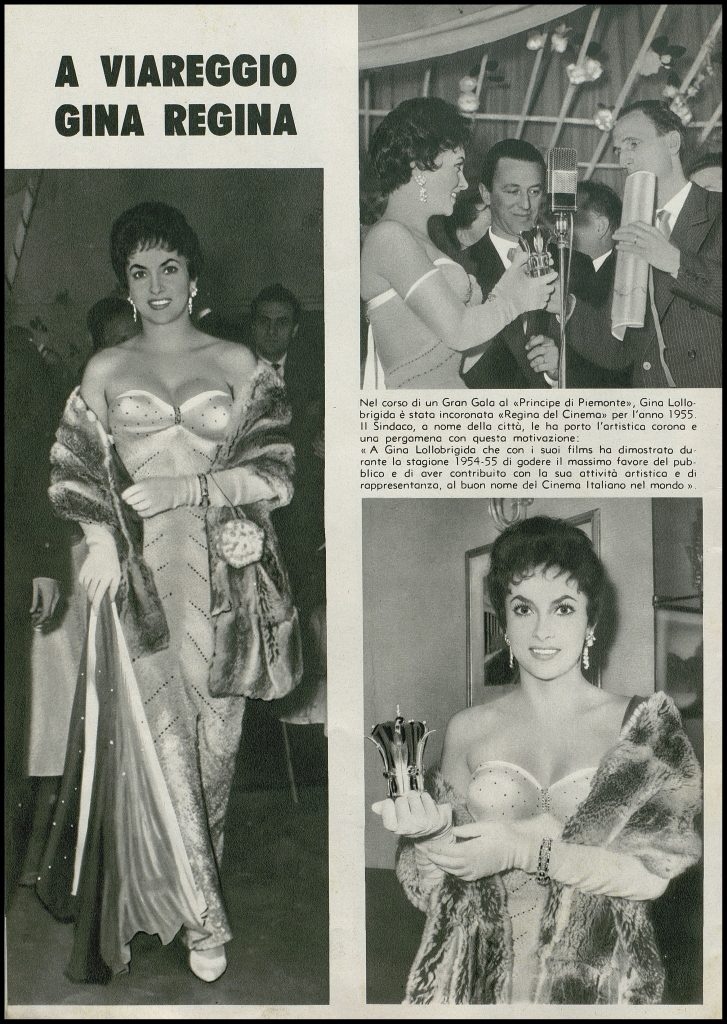
All the construction activities are now concentrated on one site, Cittadella del Carnevale, which was built in 2001 to host a museum and 16 large buildings where the floats are crafted each year. At this point, Viareggio Carnevale is a multimillion-euro industry that creates jobs and significant income for the local community. “32 artisan companies are involved in the construction of our allegorical floats, which are famous all over the world,” explains Marco Szorenyi, vice-president of Fondazione Carnevale di Viareggio. “The companies are financed by our foundation, with a total budget of approximately 4.5 million euro. Most of our budget comes from ticket sales, which reached a record in 2019 and 2020, with over 300,000 tickets sold, exceeding three million euro.”
During the Covid-19 pandemic, the Viareggio Carnevale did not stop. In fact, it was the only carnival in the world that paraded in 2021 and the only one in Italy that took place in 2022. This continuous operation allowed the companies that work for the Fondazione Carnevale di Viareggio to support themselves throughout the pandemic and return in 2023 with a spectacular edition that will celebrate 150 years of Viareggio Carnevale.
Apart from the financial impact, the spirit of competition in such a creative field is endless, as there is no specific theme to follow: the contestants are free to design whatever they choose. The themes are as varied as world politics, social issues, climate change, artists, masterpieces from the past and famous sports figures. The projects require months of commitment, beginning with the proposal of bozzetti (drawings), which happens in June. In August, the previous year’s floats are demolished, a massive month-long undertaking as the underlying iron structures can reach up to 15 meters in height and 30 tons in weight. In September, the construction of the new floats gets underway, consisting of iron structures covered with terracotta and tons of old newspapers and paste, transformed into papier-mâché sculptures.
The float artisans, who also design sets for the Puccini Theater in nearby Torre del Lago and other cultural hubs, follow strict requirements and dimensions for the construction of the floats, which fit into four categories. The minimum size for the First Category float is 84m2 and up to a maximum of 12.5 meters in height. The Second Category has the same base size (in square meters), but must be at least 11.5 meters tall; the Third Category consists of six papier-mâché sculptures sharing the same theme, whereas the Fourth Category is made up of single sculptures. There are nine First-Category floats, five Second-Category floats, nine in the Third Category, and ten in the Fourth Category. Artisan companies are chosen for a duration of three years and judged during each Carnevale, when they can be promoted to the First Category or demoted. Competition is fierce, and the winner takes home a symbolic cash prize, along with the honor of presenting a three-dimensional model of their winning float for display in the Carnevale Museum.

The final—and most magical—ingredient that makes the Viareggio Carnevale so exceptional is the community of local residents who work tirelessly alongside the artisans and construction experts. These are the people who make the finished floats come to life: the movimentisti (who with a simple internal mechanism make the sculptures move) and the figuranti (dancers on the floats themselves). Each float in the First Category has as many as 250 dancers of all ages who start practicing their choreography in September in order to be ready for the competition the following February. Each year’s choreography and costumes are unique. The participants are all volunteers and they even cover the expense of their own costumes. Talk about a sense of civic pride! As Szorenyi remarks, “The Carnival is always the background for the people of our city.”
Maria Lina Marcucci, president of the Fondazione Carnevale di Viareggio, proudly states, “The 150-year history of Carnevale is something to proudly announce to the whole world. We celebrate Carnevale’s deep roots in Viareggio and honor its past, while at the same time, we proudly look towards the future. Our Carnevale will never die.”

On the occasion of this important anniversary, an exhibition on the History of Carnevale and its spectacular allegorical floats will open at the Galleria d’Arte Moderna (Palazzo delle Muse, piazza Giuseppe Mazzini, Viareggio) on January 28 and remain on view until April 30. The exhibition will feature 70 paintings on loan from the Uffizi and other Italian museums, foundations, archives, libraries and private collections.
And while Venice Carnevale is the time when the world comes to that fabled city to enjoy costumed pedestrians, processions along the Grand Canal and candlelight dinners in historical palazzi, the Viareggio Carnevale is another spectacular Italian celebration, a moment when the population pours onto the streets for an amazing display of giant floats and the city reveals its forever beating heart. Viareggio has this kind of creative force, year after year. It is a town of optimists.






